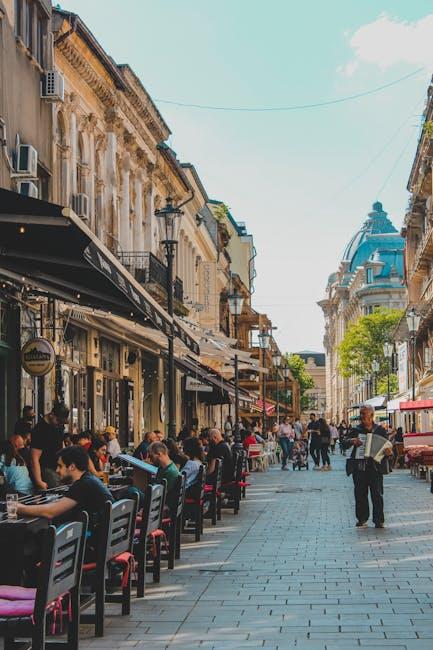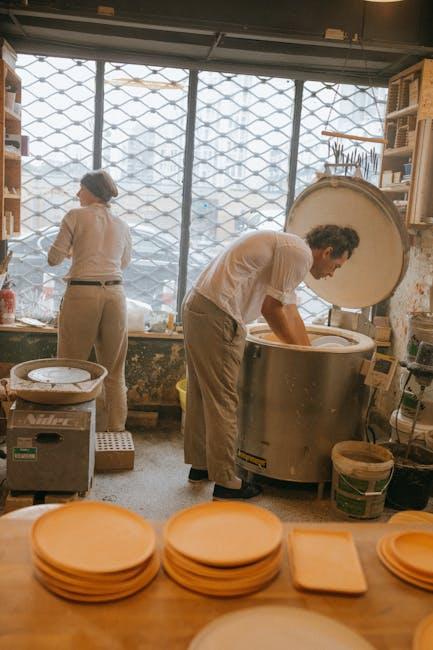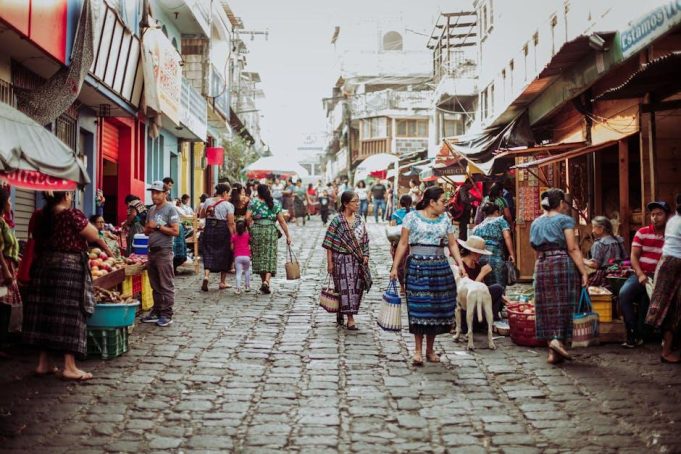In the gentle embrace of a small coastal village, where the whispers of the sea mingle with the laughter of generations, a delicate dance unfolds. Here, vibrant local traditions, woven from the threads of history and culture, face the ever-expanding tapestry of global tourism. As travelers from far and wide are drawn to the allure of untouched landscapes and authentic experiences, the very essence of these cherished customs stands at a crossroads. This article delves into the intricate balance between celebrating cultural heritage and navigating the transformative waves of tourism. It explores how communities are striving to preserve their identity while welcoming the world, ensuring that the heart of their traditions continues to beat strong in an ever-changing world.
Balancing Heritage and Hospitality: The Fine Line
In the quest to attract global travelers, communities often find themselves walking a tightrope between preserving their cultural heritage and adapting to the expectations of modern hospitality. The influx of tourism can be both a blessing and a challenge, with its potential to boost local economies while simultaneously risking the erosion of traditional customs. To achieve harmony, it is essential for communities to adopt a mindful approach that values both their rich history and the contemporary desires of visitors.
- Authentic Experiences: Offering genuine cultural experiences that educate tourists about local traditions can foster appreciation and respect.
- Community Involvement: Engaging local residents in tourism initiatives ensures that their voices are heard and their traditions preserved.
- Sustainable Practices: Implementing eco-friendly and culturally sensitive practices helps maintain the integrity of both the environment and cultural sites.
By weaving these elements into the fabric of their tourism strategy, destinations can create a symbiotic relationship where heritage and hospitality coexist, allowing both to thrive without overshadowing the other.

Cultural Immersion: Fostering Authentic Tourist Experiences
In the delicate dance between tourism and tradition, communities worldwide are striving to maintain their cultural essence while welcoming visitors. The infusion of tourists into local environments offers an opportunity for cultural exchange, but it also presents challenges in preserving age-old customs. To ensure that cultural immersion remains authentic, several strategies are being employed by communities to safeguard their heritage.
- Community-Led Initiatives: Empowering local communities to lead cultural activities ensures that traditions are presented authentically. This approach allows residents to share their stories, crafts, and rituals directly with tourists, fostering a genuine connection.
- Education and Awareness: Educating tourists about the significance of local customs and the impact of their behavior is crucial. Informative sessions and guided tours can help visitors appreciate the cultural nuances and encourage respectful engagement.
- Supporting Local Artisans: Encouraging the purchase of locally made crafts and products supports traditional artisans and helps sustain cultural practices. This economic support provides an incentive for communities to continue preserving their unique skills and traditions.
- Regulating Tourism Flow: Implementing measures to manage the number of visitors can prevent cultural sites from becoming overwhelmed. Controlled tourism ensures that the cultural integrity of these places is maintained, allowing for a more meaningful experience for all.

Empowering Local Artisans: Sustaining Traditional Crafts
In the vibrant tapestry of global tourism, the intricate threads of local traditions often risk being overshadowed. Yet, the pulse of a community’s cultural identity lies in its traditional crafts. Empowering local artisans becomes a beacon of hope for preserving these time-honored skills. By fostering an environment where artisans can thrive, communities not only safeguard their heritage but also enrich the tourist experience with authentic, handcrafted products.
- Community Workshops: Initiatives that bring together artisans and tourists to create a mutual appreciation for craftsmanship.
- Collaborative Platforms: Online marketplaces that connect artisans directly with global consumers, ensuring fair compensation.
- Educational Programs: Workshops and tours that educate visitors about the history and techniques behind traditional crafts.
These strategies not only preserve the delicate artistry of local crafts but also empower artisans economically, ensuring that the cultural heartbeat of their communities remains vibrant amid the ever-evolving landscape of tourism.

Strategic Partnerships: Collaborating for Cultural Preservation
In the face of growing tourism, forming strategic alliances has become essential for maintaining the integrity of local traditions. By collaborating with cultural organizations, government bodies, and the tourism industry, communities can ensure that their heritage is not overshadowed by commercial interests. Key partnerships are emerging as powerful tools to safeguard intangible cultural assets, such as traditional music, dance, and artisanal crafts.
- Community Engagement: Initiatives that actively involve local communities in decision-making processes help ensure that tourism development aligns with cultural preservation goals.
- Education and Awareness: Partnerships with educational institutions can foster a deeper understanding of cultural heritage, providing tourists with meaningful experiences while promoting respect for local customs.
- Economic Incentives: Collaborating with businesses to create sustainable economic models can support artisans and performers, allowing them to thrive without sacrificing cultural authenticity.
By leveraging these alliances, communities can create a balanced approach that celebrates their unique cultural identity while accommodating the economic benefits of tourism.






























